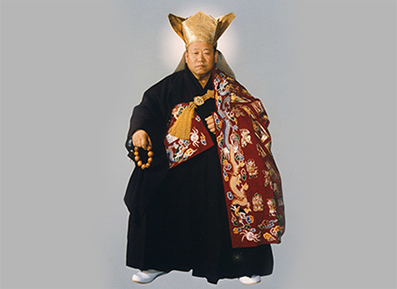Daegwangsa

- The Supreme Patriarch is the great Buddhist priest of high virtue of Korean
Buddhism who have made great efforts to develop Tiantai Buddhism rapidly and reform people.
Supreme Patriarch Nam Dae-chung (南大忠) Daejongsa became the 2nd supreme patriarch of Chontae Order of Korean Buddhism after Supreme Patriarch Nam Dae-chung Daejongsa who rebuilt Tiantai Buddhism and paved the way for modern Korean Buddhism.
Supreme Patriarch Nam Dae-chung (南大忠) Daejongsa became the 2nd supreme patriarch of Chontae Order
of Korean Buddhism after Supreme Patriarch Nam Dae-chung Daejongsa who rebuilt Tiantai Buddhism and
paved the way for modern Korean Buddhism.
The Supreme Patriarch is the great Buddhist priest of high virtue of Korean Buddhism who
have made great efforts to develop Tiantai Buddhism rapidly and reform people.
The Supreme Patriarch was born as a only son to 'Nam, Myeong-jin' of Yeongyang Nams and his mother
of 'Andong Kims' in Yeoeuisaeng Village under Gubongpalmun (九峰八門), Sobaeksan Mt. on the 5th day
of 12th month of the lunar calendar day, 1925. His common name is Iksun (益淳) and his Buddhist name
is Daechung (大忠).
He became a Buddhist mon by making Supreme Patriarch Sangwol Wongak his
teacher in Guinsa Temple, Sobaeksan Mt. when he was 21 years old. Supreme
Patriarch Nam Dae-chung Daejongsa was the best pupil who was most faithfully
taught by Supreme Patriarch Sangwol Wongak. And he respected his teacher with
his heart and soul and served him filially and was one of the constant religious-minded
followers of Supreme Patriarch Sangwol Wongak who practiced asceticism. As he had a very
warm personality, was strictly fair in ascetic practice, and was a man of lofty character,
he was expected from his friends. Especially, he always devoted himself to practice asceticism
day and night because his belief in asceticism was very strong.
upreme Patriarch Sangwol
Wongak certified that Supreme Patriarch Nam Dae-chung Daejongsa found enlightenment after practicing steady
asceticism with all his heart in 1960 when he was 36 years old.
And The Suprem Patriarch approved his enlightenment while he answered to questions of Buddhist writings in Mahasangha
Congregation in Winter Vassa of 1967. Then, his qualification of the new leader in the monastic order as the discipline of
Supreme Patriarch Sangwol Wongak was nothing sort of perfect.
He became the 2nd Jeongjeong of Chontae Order
of Korean Buddhism after succeeding to the religious tradition of Supreme Patriarch Sangwol
Wongak on July 2, 1974. The Supreme Patriarch held a important position while all the people
of Tiantai Buddhism were sad and dejected because Supreme Patriarch Sangwol Wongak entered Nirvana.
He showed the spirit of endurance and his excellent leadership having a sense of mission.
Supreme Patriarch Nam Dae-chung Daejongsa strictly practiced asceticism even though
he was very busy and was generous to the people to share their little difficulties and
slight pain. The Supreme Patriarch who made efforts to ease all the people's pain with
endless mercy faithfully carried on the work left unfinished by Supreme Patriarch Sangwol Wongak.
More than 70 temples in the whole country including Samgwangsa Temple in
Busan, Daeseongsa Temple in Daegu, Samhaksa Temple in Masan, Myeongjangsa Temple
in Cheongju, Jeonggwangsa Temple in Ulsan, Samwunsa Temple in Chuncheon, Mungangsa Temple
in Jeju, and Songdeoksa Temple in Songtan as well as Jungchang the Buddhist service (중창 the Buddhist service)
in Guinsa Temple were built under the guidance of Supreme Patriarch Nam Dae-chung Daejongsa. The nation awarded
the Achievement Award to him on April 1980 and November 1987 by approving his service and
dignified miens that led Korean Buddhism to a straight way.
The 2nd Supreme Patriarch Nam Dae-chung Daejongsa accomplished the remarkable
development of the religious influence of Tiantai Buddhism and made every effort
for the public system. And he entered Nirvana on September 3, 1993 at the age of 69
after spending 48 years as the Buddhist monk.








